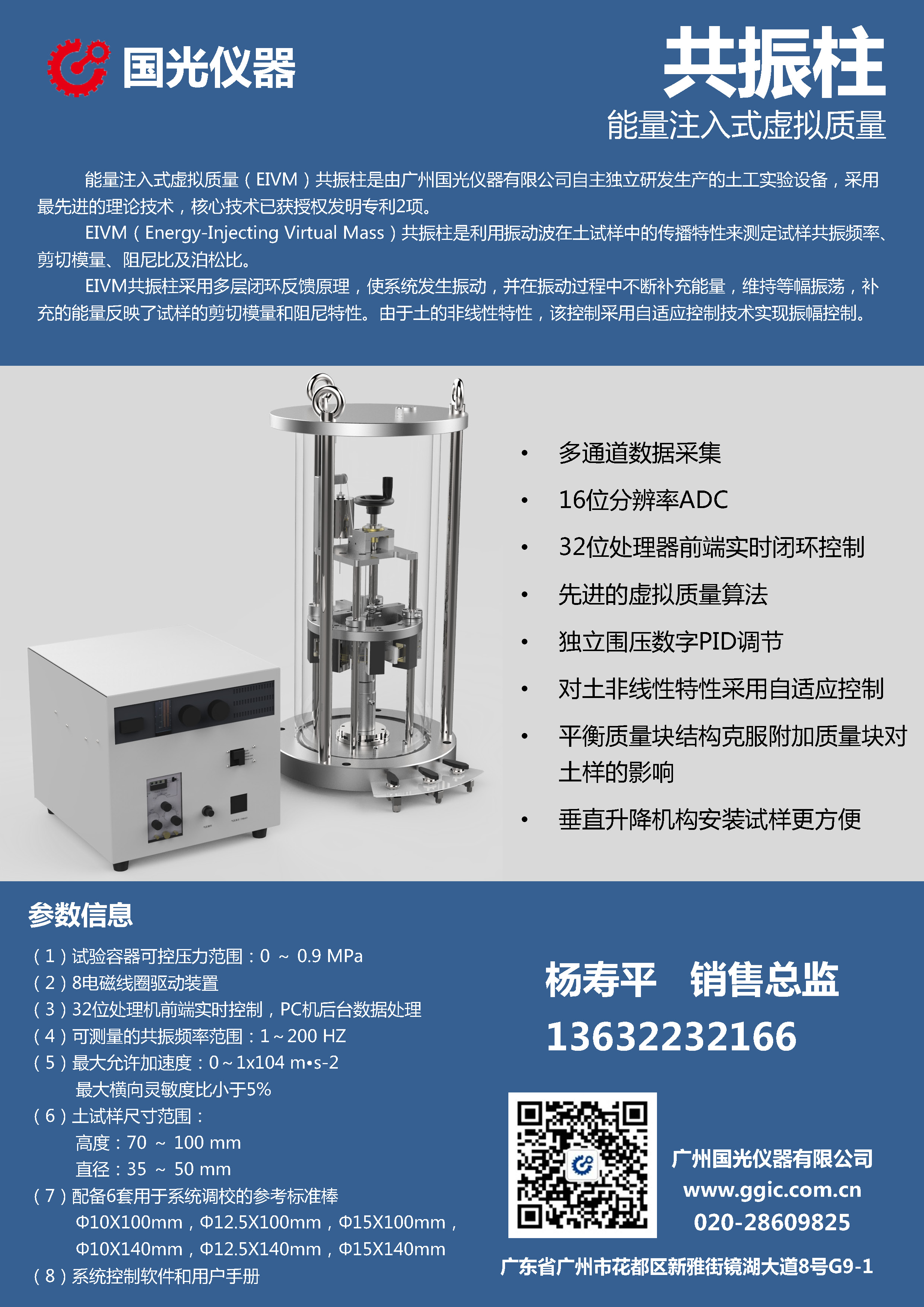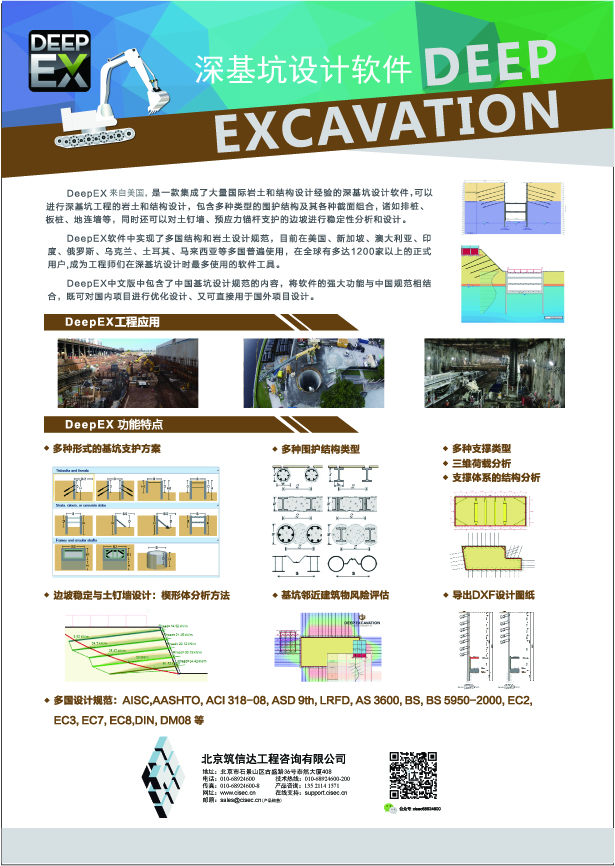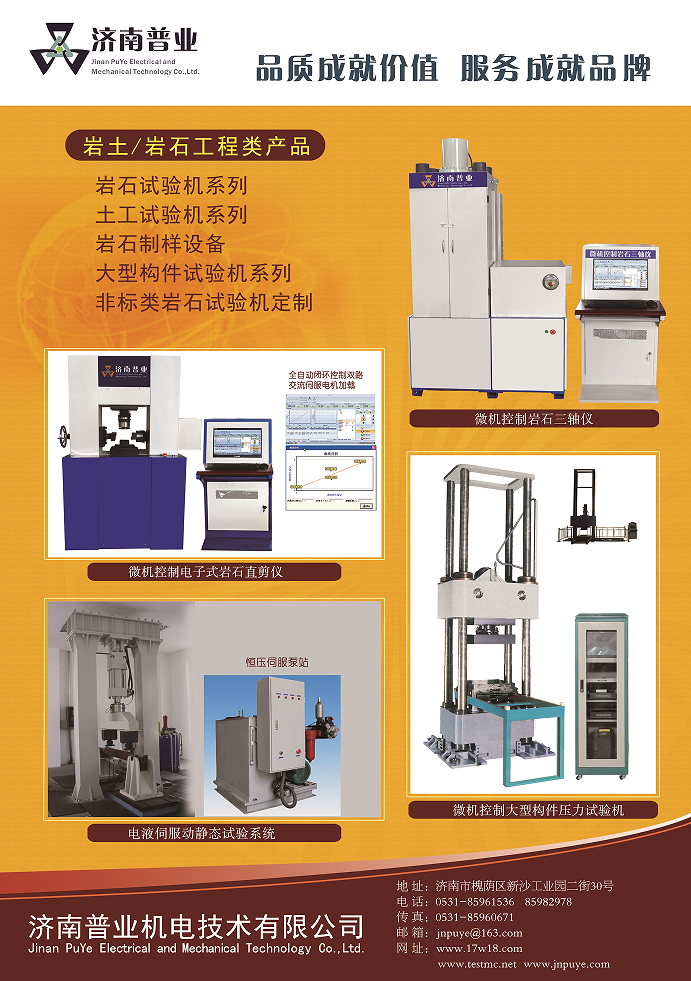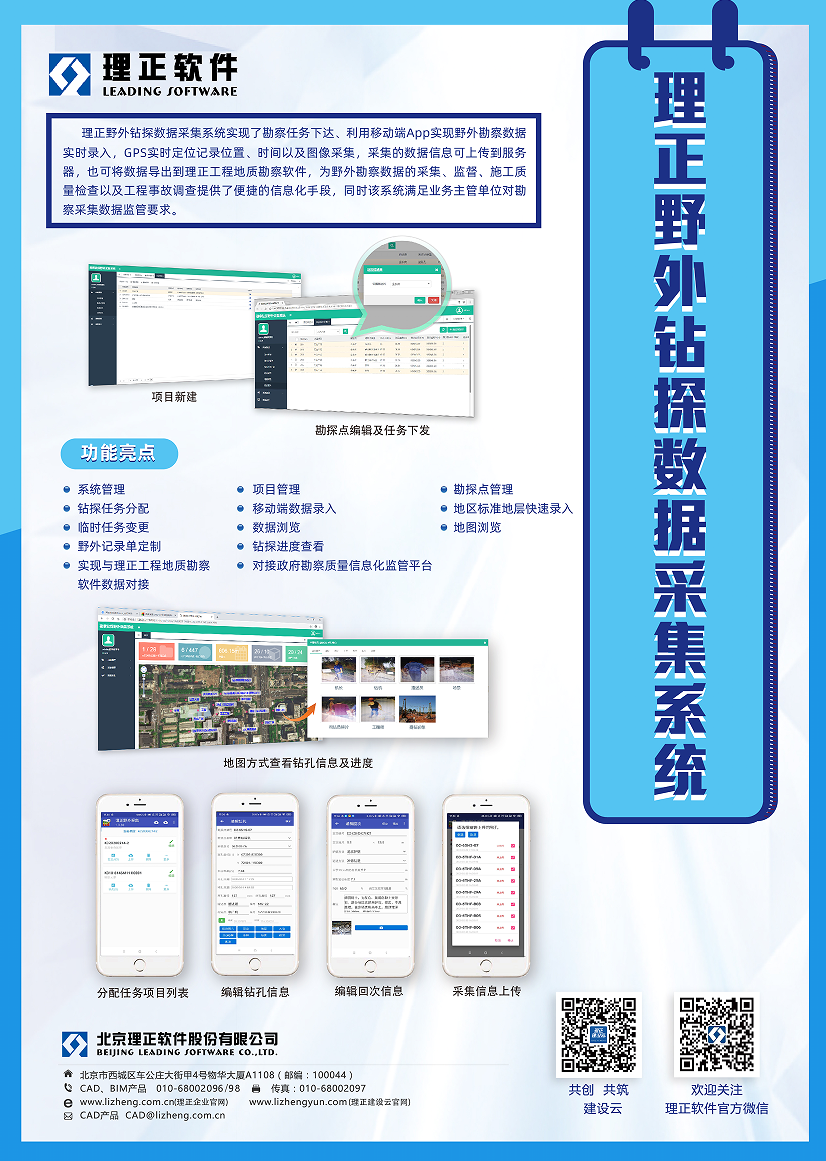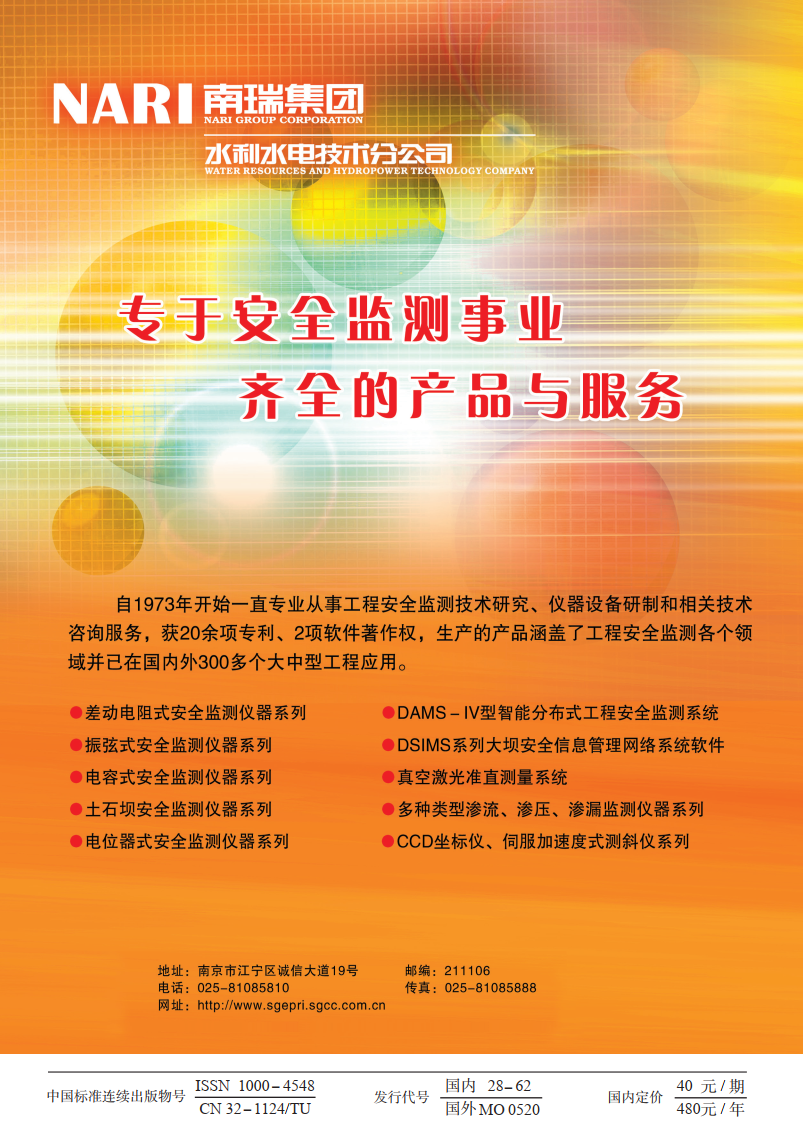Discrimination methods for dispersivity of fine-grained soils based on dispersive mechanisms
-
摘要: 针孔、碎块、双密度计、孔隙水可溶性阳离子和交换性钠离子百分比等现有评价细粒土分散性的5种常规试验方法,操作过程繁琐,耗时耗力。基于细粒土分散机理,通过人工配制不同黏粒含量、不同碳酸钠质量分数的土样,研究细粒土分散性常规判别试验方法的适用性,提出快速准确评价细粒土分散性的方法。试验结果表明,分散土可分为物理性分散土(可称之为低凝聚性土)、化学性分散土、物理-化学复合型分散土,其中黏粒含量10%是细粒土产生物理性分散的界限。泥球、孔隙水可溶性阳离子和交换性钠离子百分比试验适用于所有细粒土,针孔和双密度计试验适用于黏粒含量不低于10%的细粒土。当黏粒含量低于10%时,采用泥球试验的判别结果作为判别依据;当黏粒含量不低于10%时,以泥球和针孔试验的判别结果作为综合判别依据,并且以最强的分散性判别结果为准。双密度计、孔隙水可溶性阳离子、交换性钠离子百分比和酸碱度试验仅作为细粒土分散机理的解释性试验,不参与综合判别。Abstract: The crumb tests, the pinhole tests, the double-hydrometer tests, the pore water soluble cation tests and the exchangeable sodium ion percentage tests are the common methods for identifying the dispersivity of the fine-grained soils, which are complex and time-consuming. Based on the dispersive mechanisms of the fine-grained soils, the soil samples with different clay contents and sodium carbonate mass fractions are prepared artificially to analyze the suitability of the conventional discrimination methods for dispersivity and to propose a rapid and accurate discrimination method. The results show that the dispersive soils can be divided into physical dispersive soils which can be called low cohesive soils, chemical dispersive soils and physical-chemical composite dispersive soils. It also can be found that 10% of the clay content is the upper limit of physical dispersivity of the fine-grained soils. The mud ball tests, the pore water soluble cation tests and the exchangeable sodium ion percentage tests can be applied to all fine-grained soils, and the pinhole tests and the double-hydrometer tests are suitable for the fine-grained soils with a clay content no lower than 10%. The results of the mud ball tests should be used as the discrimination criterion for dispersivity if the clay content is lower than 10%, otherwise the discrimination criterion for dispersivity should be the strongest dispersivity results of the mud ball tests and the pinhole tests. The double-hydrometer tests, the pore water soluble cation tests, the exchangeable sodium ion percentage tests, and the pH tests are used as the explanatory tests for the dispersive mechanisms of the fine-grained soils, which have no influences on the comprehensive discrimination.
-
0. 引言
细粒土从遇水是否分散流失的角度,可分为分散土、过渡土和非分散土。分散土在低含盐量水或纯净水的作用下,由于土体颗粒之间的吸引力小于排斥力,使得部分土颗粒自行分散成胶粒,从而导致其抗水流冲蚀能力和渗透稳定性较差,容易造成管涌、冲沟等破坏,因此对土木水利工程安全造成极大的威胁[1]。为了在工程实践中准确判别土体的分散性,国内外研究学者根据分散土的特点,提出了多种细粒土的分散性判别试验方法,其中以针孔试验[2]、碎块试验[3]、双密度计试验[4]、孔隙水可溶性阳离子试验[5]、交换性钠离子百分比试验[6]等5种试验方法最为普遍采用,当各判别试验结果不一致时,往往进行综合判别[7]。但是,这些判别试验本身具有一定的适宜性,并不一定适用于所有的土,如美国《ASTM(American Society of Testing Materials)》规定,针孔试验(D4647)、双密度计试验(D4221)适用于黏粒含量高于12%和塑性指数大于4的土,碎块试验(D6572)适用于黏粒含量高于12%和塑性指数大于8的土;英国《BS(British Standards)》(1377-5)[8]中规定碎块试验、针孔试验、双密度计试验均不适用于黏粒含量低于10%和塑性指数不大于4的土。但是,近期工程实践和相关研究表明[9],有部分土的黏粒含量虽然低于12%,但是由于土中同时含有引起分散的化学因素,这部分土体更易出现冲蚀破坏。因此,对于黏粒含量小于12%的土样同样需要进行分散性判别与研究。
分散土的分散机理比较复杂,目前主要是从黏土矿物特性、双电层理论等角度进行解释。Ingles等[10]和Sherard等[11]均认为,分散土中含有大量的2∶1型蒙脱石,并且孔隙水溶液中的钠离子百分比含量是决定土是否具有分散性的主要因素;同时,Sherard等[11]和Mohanty等[12]研究认为分散土中的交换性钠离子含量也很高。Chorom等[13]认为土体酸碱度与分散度之间具有正相关性,碱性越高,分散性越强;魏迎奇等[14]建议将其作为分散土判别的辅助性指标。王观平等[15]和赵高文等[16]研究发现蒙脱石中离子种类和含量与土体分散性之间有密切关系。刘杰等[17]将土体的分散机理归纳为内因和外因,内因是以蒙脱石为主体的黏土矿物成分和以钠离子占主体的孔隙水易溶盐的,外因是纯净的水质。Fan等[18]根据土的分散机理将分散土分为由于土体的黏粒含量较低引起的物理性分散土和由于土体中高含量的钠离子和酸碱度呈碱性共同作用引起的化学性分散土两种类型。
综上所述,现有的细粒土的分散性判别方法对于指导工程实践仍显不足,而且试验过程繁琐、耗时耗力、成本较大,如何快速准确判别细粒土的分散性是岩土工程勘察领域亟待解决的问题。细粒土分散机理的深入研究,对于指导分散性判别方法提供了重要的理论依据。本文基于细粒土分散机理的研究,以人工配制不同黏粒含量、不同碳酸钠质量分数的细粒土为研究对象,采用泥球试验、针孔试验、双密度计试验、孔隙水可溶性阳离子试验、交换性钠离子百分比试验和酸碱度试验,研究黏粒含量、钠离子和酸碱度对细粒土分散性评价的影响,分析分散土判别方法的适用性,进而提出快速准确简单有效的分散土综合判别方法,为指导分散土的判别与应用提供科学支撑。
1. 试验材料与方法
1.1 试验材料及土样配制
本试验用土取自延安宝塔区,现场取样深度为5 m(土的基本物理指标见表 1)。依据司笃克斯沉降原理,采用自然沉降的方法获得低黏粒含量土。具体方法是按照土水质量比1∶4将一定质量的延安黄土与纯水混合形成土-水悬液,搅拌均匀,静置24 h,去除上部黏粒层,取底层的土样再次沉降,反复沉降直至底层土的黏粒含量低于3.0%。然后,按式(1)计算,配制黏粒含量分别为3.0%,6.0%,9.0%,12.0%,15.0%,17.4%的土样。
0.174X+0.01aYX+Y×100%=P ,X+Y=M 。} (1) 表 1 土样的物理性质Table 1. Physical properties of soils取土
地点颗粒相对质量密度
Gs液限
wL/%塑限
wP/%最大干密度
ρdmax/
(g·cm-3)最优含水率
wop/%颗粒组成/% 土样
分类砂粒
(2~0.075 mm)粉粒
(0.075~
0.005 mm)黏粒
(≤0.005 mm)延安 2.71 30.3 18.0 1.78 16.0 1.4 81.2 17.4 低液限黏土(CL) 式中:P为黏粒含量(%);M为需要制备的不同黏粒含量的土样质量(g),根据具体试验类型和组数确定;X为制备某一黏粒含量土样所需的延安黄土(黏粒含量为17.4%)质量,Y为制备某一黏粒含量土样所需的低黏粒含量土质量;a为多次沉降底层土的黏粒含量。
根据细粒土化学性分散形成机理,向不同黏粒含量土样中分别掺入质量比0%,0.03%,0.05%,0.07%,0.09%,0.11%,0.13%,0.16%的碳酸钠,配制不同钠离子含量和酸碱度的土样,用以模拟自然条件下土样从非分散到过渡直至分散的不同化学性分散程度。按照黏粒含量和碳酸钠质量分数由小到大的顺序依次将土样命名,如土样编号为12.0(0.16),则表明土样的黏粒含量为12.0%,碳酸钠质量分数为0.16%。
1.2 试验方法
针孔试验、碎块试验、双密度计试验、孔隙水可溶性阳离子试验、交换性钠离子百分比试验根据《ASTM》[2-6]、《分散性土研究》[19]来进行,酸碱度试验按照《土工试验方法标准:GB/T 50123—2019》[20]进行。
本文采用泥球试验代替碎块试验。泥球试验与碎块试验的原理相同,但是试样制备有所差异。泥球试验是将一定量过2 mm筛土样放入搪瓷碗中,加入适量纯水将土样调成均匀膏状,然后将膏状土样抟成直径约15 mm表面光滑的泥球。泥球由于含水率较大,土颗粒已吸水饱和,胶结物完全溶解,土球内部的结构不均匀应力基本消除,土颗粒崩解时没有气体迸发,而且土颗粒吸附阳离子的双电层充分扩展,能够真实反映土颗粒间的斥力与引力关系,克服常规碎块试验中因气体迸发扰动土体而导致土中的胶粒发生位移造成误判。
2. 结果分析与讨论
2.1 针孔试验
按照针孔试验方法的要求制备试样,试样的含水率为最优含水率,压实度为0.96。试验结束后记录最终水力坡降、针孔变化、水流颜色等。部分土样典型的针孔剖面和水流颜色见图 1,针孔试验判别结果见表 2。
表 2 针孔试验判别结果Table 2. Discriminated results of pinhole tests黏粒含量/% 碳酸钠质量分数/% 0 0.03 0.05 0.07 0.09 0.11 0.13 0.16 3.0 分 分 分 分 分 分 分 分 6.0 分 分 分 分 分 分 分 分 9.0 分 分 分 分 分 分 分 分 12.0 非 非 非 过 过 过 分 分 15.0 非 非 非 非 非 过 过 分 17.4 非 非 非 非 非 过 过 分 注:(1)“分”表示分散土,“过”表示过渡土,“非”表示非分散土;(2)判别标准:分散土,在50 mm水头下针孔迅速扩大1.5倍以上,水流混浊;过渡土,在180,380 mm水头下针孔扩大,水流混浊;非分散土,在1020 mm水头下针孔没有变化,水流清澈。 由图 1和表 2可得,当黏粒含量不低于12.0%时,随着碳酸钠质量分数的增加,土样逐渐由非分散性转变为过渡性直至分散性,在碳酸钠质量分数不大于0.05%时,均表现为非分散性;在碳酸钠质量分数在0.07%~0.13%时,表现为非分散性、过渡性和分散性;在碳酸钠质量分数为0.16%时,表现为分散性。此外,在同一碳酸钠质量分数条件下,随着黏粒含量的增加,分散性减弱,部分土样由分散性转变为过渡性(如碳酸钠质量分数0.13%)或由过渡性转变为非分散性(如碳酸钠质量分数0.09%)。
当土样中不含碳酸钠时,黏粒含量不高于9.0%的土样表现为分散性,黏粒含量不低于12.0%的土样表现为非分散性,由此认为黏粒含量在9.0%~12.0%是细粒土产生物理性分散的界限。值得注意的是,对于黏粒含量不高于9.0%的土样,无论土体中是否掺入碳酸钠,在50 mm水头下冲蚀后水色浑浊,且孔径增大至2~4 mm,均判别为分散土,因此无法区分物理性分散(黏粒含量低引起的分散)与化学性分散(土体中钠离子含量高和酸碱度呈碱性引起的分散)。对于黏粒含量不低于12.0%的土样来讲,针孔试验具有很好的识别能力,即区分出分散土、过渡土和非分散土。因此,本研究表明针孔试验对于判别黏粒含量不低于12.0%的土样分散性具有较好的适用性。考虑到现有规范中针孔试验对于土样黏粒含量不低于10%或12%的规定,从工程安全的角度考虑,建议针孔试验适用于黏粒含量不低于10%的土样,同时认为黏粒含量10%是细粒土产生物理性分散的界限。
物理性分散土是由于土颗粒之间黏粒含量低引起的分散,它与化学性分散最大的不同就是分散颗粒大小不同,物理性分散土虽然抗冲蚀能力低,但是颗粒主要以粉粒为主,在设计反滤层时按照常规的设计方法进行设计;化学性分散主要是土颗粒遇水后,分散成很细小的胶粒,按照常规的设计方法进行的反滤层设计安全性降低。为了减少工程界对分散土的敏感,建议将物理性分散土称之为“低凝聚性土”。
2.2 泥球试验
按照泥球试验要求,制备直径约15 mm表面光滑的泥球,将其放入盛有200 mL纯水的容积为250 mL透明烧杯底部中央,观察泥球崩解变化并记录崩解时长,待试样在连续6 h内不再崩解变化时结束试验。部分土样典型泥球试验崩解情况见图 2,泥球试验判别结果见表 3。
表 3 泥球试验判别结果Table 3. Discriminated results of mud ball tests黏粒
含量/%碳酸钠质量分数/% 0 0.03 0.05 0.07 0.09 0.11 0.13 0.16 3.0 非 过 分 分 分+ 分+ 分+ 分+ 6.0 非 过 过 分 分 分+ 分+ 分+ 9.0 非 过 过 过 分 分+ 分+ 分+ 12.0 非 非 非 过 分 分+ 分+ 分+ 15.0 非 非 非 非 过 分+ 分+ 分+ 17.4 非 非 非 非 过 分+ 分+ 分+ 注:①“分+”表示强分散土,“分”表示分散土,“过”表示过渡土,“非”表示非分散土。②判别标准:非分散土,土水之间没有反应,土-水界面清晰。过渡土,土水之间轻微反应,土-水界面轻微模糊。分散土,土水之间中等反应,土-水界面模糊。强分散土,土水之间严重反应,土-水界面完全模糊。 由图 2和表 3可看出,当土样不含有碳酸钠时,不同黏粒含量的土样均表现为非分散性;随着碳酸钠质量分数的增加,土样的分散性增强,由非分散性转变为过渡性、分散性,甚至是强分散性。当碳酸钠质量分数不大于0.07%时,随着土样黏粒含量升高,泥球遇水崩解形成的土块形状越大,且周围雾状胶粒越少,土-水界面逐渐清晰,直至完全清澈,表明土体由分散性转变为过渡性和非分散性。当碳酸钠质量分数为0.09%时,随着土样黏粒含量升高,土样由分散性转为过渡性;当碳酸钠质量分数不小于0.11%时,不同黏粒含量土样均表现为强分散性。
由此可见,如果土样不含有碳酸钠,泥球试验的判别结果均是非分散土,即泥球试验未识别出物理性分散土;相反,如果土中含有碳酸钠(即化学性分散土),根据泥球与水之间的胶粒反应程度可清晰准确地判别土样的分散程度。因此,泥球试验可适用于所有细粒土的分散性判别。
由于现有规范中规定碎块试验适用于黏粒含量不低于10%或12%的土样,故对于黏粒含量低于10%或12%的土一般不做碎块试验。但是本研究表明,当黏粒含量较低时,若土体中钠离子含量高,且土体呈强碱性,土样依然会呈现明显的分散性。已有工程实践也表明,这种物理-化学复合作用引起的分散土在自然界是存在的。因此,对于黏粒含量低于10%的土样,建议进行泥球试验,若泥球试验表现为分散性,则需要进一步深入研究。
此外,当黏粒含量不低于12.0%时,与针孔试验判别结果相比,泥球试验的判别结果更偏重安全,如对于碳酸钠质量分数为0.11%的土样,针孔试验结果表现为过渡性,而泥球试验结果均表现为分散性。
2.3 双密度计试验
按照双密度计试验的要求,采用土壤密度计,分别通过非常规方法(不煮沸,不加分散剂,抽气)和常规方法(煮沸,加分散剂)测定黏粒含量,求得分散度D。非常规方法测定黏粒含量是模拟土样在静水条件下土颗粒自行水化分散的能力。如果D值越高,则土体的分散能力越强。试验结果见图 3和表 4。
表 4 双密度计试验判别结果Table 4. Discriminated results of double hydrometer tests黏粒含量/% 碳酸钠质量分数/% 0 0.03 0.05 0.07 0.09 0.11 0.13 0.16 3.0 非 非 非 非 非 过 过 分 6.0 非 非 非 非 非 过 过 分 9.0 非 非 非 非 非 过 过 分 12.0 非 非 非 非 非 过 分 分 15.0 非 非 非 非 非 过 分 分 17.4 非 非 非 非 非 过 分 分 注:①“分”表示分散土,“过”表示过渡土,“非”表示非分散土。②判别标准:一般认为其判别标准应为:非分散土(D < 30%);过渡土(30% ≤ D ≤ 50%);分散土(D > 50%)。 图 3和表 4表明,当碳酸钠质量分数不大于0.09%时,土样的分散度均低于30%,属于非分散土;当碳酸钠质量分数为0.11%时,土样的分散度均在30%~50%,属于过渡土;当碳酸钠质量分数为0.13%时,黏粒含量3.0%,6.0%和9.0%土样属于过渡土,黏粒含量12.0%,15.0%和17.4%土样属于分散土;当碳酸钠质量分数为0.16%时,土样的分散度均大于60%,属于分散土。
在试验过程中发现,碳酸钠质量分数相同时,土样黏粒含量越高,测定的黏粒含量也越高,但是由于分散度是一个计算相对值,导致分散度随黏粒含量的变化趋势比较离散。从表 4中看出,当碳酸钠质量分数为0.13%时,黏粒含量为3.0%,6.0%,9.0%的土样属于过渡土,黏粒含量为12.0%,15.0%,17.4%的土样属于分散土。按照分散机理和泥球试验、针孔试验结果来判断,碳酸钠质量分数相同时,黏粒含量应该与分散度呈负相关性,但是双密度计试验结果却与之矛盾。由此可见,双密度计试验结果受黏粒含量和碳酸钠质量分数影响较大。
与泥球试验结果相比,当黏粒含量不高于9.0%时,双密度计试验的判别结果相同率只有25%;当黏粒含量不低于12.0%时,与针孔、泥球试验的判别结果相比,双密度计试验判别结果的相同率分别达到83.3%,70.8%。此外,考虑到密度计法测定颗粒级配时,由于人员、仪器、温度等因素,测定的结果有所偏差,尤其是在黏粒含量较低时,测定的误差偏大。因此,本研究表明,双密度计试验对于判别黏粒含量不低于12.0%的土样分散性具有较好的适用性;同样考虑到已有规范的规定,建议双密度计试验适用于黏粒含量不低于10%的土样。
2.4 孔隙水可溶性阳离子试验
钠百分比(sodium percent,Ps)是土体孔隙水溶液中可溶性的钠离子含量占阳离子总量的百分数,反映土颗粒中可溶性钠离子的相对含量。根据泥球试验、针孔试验和双密度计试验结果,选取碳酸钠质量分数分别为0%,0.05%,0.11%,0.16%的土样进行试验。钠百分比与黏粒含量之间的关系见图 4,孔隙水可溶性阳离子试验判别结果见表 5。
表 5 孔隙水可溶性阳离子试验判别结果Table 5. Discriminated results of pore water soluble cation tests黏粒
含量/%碳酸钠质量分数/% 0 0.05 0.11 0.16 3.0 非 分 分 分 6.0 非 分 分 分 9.0 非 分 分 分 12.0 非 分 分 分 15.0 非 分 分 分 17.4 非 分 分 分 注:①“分”表示分散土,“过”表示过渡土,“非”表示非分散土。②判别标准:当孔隙水中阳离子总量(TDS)≥ 1 1/n mmol/L时,非分散土,Ps < 40%;过渡土,40% ≤Ps < 60%;分散土,Ps ≥ 60%。 从图 4和表 5可看出,当土样中不含有碳酸钠时,土样的Ps值随着黏粒含量的升高而增大,而且均低于40%,属于非分散土;当土样中碳酸钠质量分数分别为0.05%,0.11%,0.16%时,土样的Ps值随着黏粒含量增加均有所降低,但降低幅度都不大,且Ps值都大于60%,均判别为分散土。与泥球试验的判别结果相比,孔隙水可溶性阳离子试验判别结果相同率达到79.2%;当黏粒含量不低于12.0%时,与针孔试验的判别结果相比,孔隙水可溶性阳离子试验判别结果的相同率只有50%。因此,孔隙水可溶性阳离子试验可适用于所有细粒土的分散性判别。
2.5 交换性钠离子百分比试验
交换性钠离子百分比(exchangeable sodium percentage,Pes)是土体中交换性钠离子含量占阳离子交换量的百分数,反映土颗粒吸附钠离子的相对含量。根据泥球试验、针孔试验和双密度计试验结果,选取碳酸钠质量分数分别为0%,0.05%,0.11%,0.16%的土样进行试验。交换性钠离子百分比与黏粒含量之间的关系见图 5,交换性钠离子百分比试验判别结果见表 6。
表 6 交换性钠离子百分比试验判别结果Table 6. Discriminated results of exchangeable sodium ion percentage tests黏粒
含量/%碳酸钠质量分数/% 0 0.05 0.11 0.16 3.0 非 非 分 分 6.0 非 非 过 分 9.0 非 非 过 分 12.0 非 非 过 分 15.0 非 非 非 分 17.4 非 非 非 过 注:①“分”表示分散土,“过”表示过渡土,“非”表示非分散土。②判别标准:非分散土,Pes < 7;过渡土,7 ≤ Pes < 10;分散土,Pes ≥ 10。 从图 5可看出,在同一碳酸钠质量分数下,随着黏粒含量的增加,交换性钠离子百分比降低;在同一黏粒含量条件下,随着碳酸钠含量的增加,交换性钠离子百分比增大。从表 6可看出,在碳酸钠质量分数不大于0.05%时,不同黏粒含量的土样均表现为非分散性;在碳酸钠质量分数为0.11%时,黏粒含量不高于12.0%的土样表现为分散性或过渡性,黏粒含量为15.0%,17.4%的土样表现为非分散性;在碳酸钠质量分数为0.16%时,黏粒含量不高于15.0%的土样均表现为分散性,黏粒含量为17.4%的土样表现为过渡性。
与泥球试验结果相比,交换性钠离子试验判别结果相同率达到62.5%;当黏粒含量不低于12.0%时,与针孔试验结果相比,交换性钠离子试验判别结果的相同率达到75%。因此,交换性钠离子百分比试验可适用于所有细粒土的分散性判别。
钠百分比和交换性钠离子百分比2个参数分别反映土-水-电解质系统中溶解态和吸附态的钠离子的相对含量,两者之间遵循“道南平衡”[21]。以钠离子百分比为横坐标、交换性钠离子百分比为纵坐标绘制两者之间的关系图(见图 6)。从图 6可看出,两者之间符合显著的指数函数关系,随着Ps增加,Pes呈指数增加。由于两个试验均反映土体中的钠离子含量,因此,基于试验成本考虑,建议选择孔隙水可溶性阳离子试验。
2.6 酸碱度试验
作为土壤化学性质的重要指标之一,酸碱度通过改变黏土颗粒表面的负电荷数量,影响双电层厚度,可大概反映土体的化学性分散程度。酸碱度试验结果见图 7。
从图 7可看出,同一碳酸钠质量分数条件下,pH值随着黏粒含量升高而降低;在同一黏粒含量条件下,pH值随着碳酸钠质量分数增加而增大。与素土相比,碳酸钠引起的化学性分散土或物理-化学复合分散土的pH显著偏高,如泥球试验中判别为分散土的17.4(0.11)pH为9.55,而17.4(0)土样pH为8.61。
由土壤化学、土壤学等相关理论可知,土壤胶体吸附的交换性阳离子有两种类型:一类是致酸离子(如H+、Al3+),另一类是盐基离子(如K+、Na+、Ca2+、Mg2+)。两种类型的交换性阳离子组成的体系可提高土壤抵抗少量酸碱物质的能力即土壤缓冲性,致酸离子和盐基离子可以分别对OH-、H+起缓冲作用,避免土壤酸碱度产生剧烈变化[22-23]。因此,土壤黏粒含量越高,阳离子交换量越大,缓冲性越强,土壤pH变化越小。此外,黏土颗粒表面和边缘可能暴露出的羟基(SiOH)分解形成SiO-和H+,该过程同样受pH值的影响。当土样碱性增强时,羟基(SiOH)分解形成的SiO-增多,即土颗粒负电荷数增加,吸附的阳离子增多,当吸附的阳离子主要是钠离子时,颗粒表面易于形成扩散双电层使颗粒趋于分散[24]。由于化学性分散土或物理-化学复合分散土的碱性要显著高于非分散土,可将其作为分散性判别的一种辅助指标。
2.7 综合评价方法分析与讨论
将碳酸钠质量分数为0%,0.05%,0.11%和0.16%的不同黏粒含量土样的泥球试验、针孔试验、双密度计试验、孔隙水可溶性阳离子试验和交换性钠离子百分比试验判别结果进行汇总(见表 7),探讨分析细粒土分散性的综合评价方法。
表 7 5种分散性试验判别结果汇总Table 7. Summary of discriminated results of 5 kinds of dispersivity tests黏粒
含量/%碳酸钠质量分数/% 0 0.05 0.11 0.16 泥 针 双 孔 交 泥 针 双 孔 交 泥 针 双 孔 交 泥 针 双 孔 交 3.0 非 — — 非 非 分 — — 分 非 分 — — 分 分 分 — — 分 分 6.0 非 — — 非 非 过 — — 分 非 分 — — 分 过 分 — — 分 分 9.0 非 — — 非 非 过 — — 分 非 分 — — 分 过 分 — — 分 分 12.0 非 非 非 非 非 非 非 非 分 非 分 过 过 分 过 分 分 分 分 分 15.0 非 非 非 非 非 非 非 非 分 非 分 过 过 分 非 分 分 分 分 分 17.4 非 非 非 非 非 非 非 非 分 非 分 过 过 分 非 分 分 分 分 过 注:①“分”表示分散土,过表示过渡土,“非”表示非分散土。②“泥”表示泥球试验,“针”表示针孔试验,“双”表示双密度计试验,“孔”表示孔隙水可溶性阳离子试验,“交”表示交换性钠离子百分比试验。③由于针孔试验和双密度计试验不适用黏粒含量低于10%的土样,故表中没有列出试验结果。 当黏粒含量不高于9.0%时,随着碳酸钠质量分数的增加,土体的分散性逐渐增强。在碳酸钠质量分数为0%时,泥球、孔隙水可溶性阳离子和交换性钠离子百分比试验判别结果均表现为非分散性;在碳酸钠质量分数为0.05%时,泥球和孔隙水可溶性阳离子试验判别结果表现为分散性或过渡性,交换性钠离子百分比试验仍表现为非分散性;在碳酸钠质量分数为0.11%时,泥球和孔隙水可溶性阳离子试验表现为分散性,交换性钠离子百分比试验表现为分散性或过渡性;在碳酸钠质量分数为0.16%时,3种试验判别结果均表现为分散性。
当黏粒含量不低于12.0%时,随着碳酸钠质量分数的增加,土体的分散性同样逐渐增强。在碳酸钠质量分数为0%时,泥球、针孔、双密度计、孔隙水可溶性阳离子和交换性钠离子百分比试验均表现为非分散性;在碳酸钠质量分数为0.05%时,除了孔隙水可溶性阳离子试验表现为分散性外,其余4种试验均表现为非分散性,这说明孔隙水可溶性阳离子试验较为敏感(另一方面,也可能表明孔隙水可溶性阳离子试验现有判别标准对于Ps较低的土样不适用);在碳酸钠质量分数为0.11%时,泥球和孔隙水可溶性阳离子试验表现为分散性,针孔和双密度计试验表现为过渡性,而交换性钠离子百分比试验表现为过渡性或非分散性;在碳酸钠质量分数为0.16%时,除交换性钠离子百分比试验中黏粒含量为17.4%土样表现为过渡性以外,其余土样的5种试验判别结果均表现为分散性。
综上所述,在细粒土的分散性试验中,泥球和孔隙水可溶性阳离子试验最为敏感。泥球试验是从土壤胶体化学观点出发,认为细粒土的分散原因是土颗粒在高钠离子含量和酸碱度呈碱性作用下胶粒分散而引起的,因而采用胶体析出的不同程度作为判别标准。泥球试验的结果与孔隙水可溶性阳离子试验、交换性钠离子百分比试验的结果具有很好的吻合性,也能证明土壤胶体化学观点的正确性。泥球试验简单易行,可直观看到土颗粒在静水中的崩解分散情况,它克服了原有的碎块试验由于含水率低引起的误判,但其自身的缺点在于它是一种定性的判别,缺乏定量的指标,而且在定性判别时需要丰富的经验。
针孔试验直观模拟土体中的裂缝或孔隙在渗透水流作用下所承受的冲蚀条件,具有广泛的工程现实意义,通常被认为是最可靠的鉴定方法[7]。该试验的缺点是在黏粒含量不高于12.0%时无法区分土样分散性是由于黏粒含量低引起,还是由于高钠离子含量和酸碱度呈碱性引起。由于泥球试验和针孔试验分别模拟了静水、动水作用下土颗粒遇水分散状况,不但试验过程简单,而且判别结果能够相互补充、相互验证,因此,建议将泥球试验和针孔试验结果作为细粒土分散性综合判别依据。
双密度计试验是美国农业部土壤保持服务实验室Volk[25]为了研究农业土壤的团粒结构而提出。岩土工程界为了解决分散土的判别问题,引用借鉴了该方法。但是,该方法的不足是对盐渍土不适用,因为盐离子的聚沉效应使得土水悬液很快分离,非常规测定颗粒级配试验无法进行。孔隙水可溶性阳离子和交换性钠离子百分比试验是通过测定土体孔隙水溶液中钠离子和土颗粒吸附态的钠离子相对含量,间接反映土颗粒的双电层厚度。双密度计、孔隙水可溶性阳离子和交换性钠离子百分比试验的评价标准,是根据大量的试验分析统计而来的经验值,存在许多例外情况,而且试验本身耗时耗力,不利于快速评价细粒土的分散性;但是这些方法对于进一步深入研究分散土产生的机理具有非常重要的意义。
根据上述分析与讨论,结合细粒土的分散机理,建议在细粒土分散性判别试验中,以泥球和针孔试验的判别结果作为综合判别依据;双密度计、孔隙水可溶性阳离子、交换性钠离子百分比和酸碱度试验作为分散机理的解释性试验。当土体黏粒含量低于10%时,以泥球试验结果为准;当土体黏粒含量不低于10%时,则需要泥球试验和针孔试验共同判别。当泥球和针孔试验判别结果不一致时,从工程安全的角度考虑,取分散性最强的结果作为最终判别结果。
3. 结论
(1)根据细粒土的分散产生机理,将分散土分为物理性分散土(可称之为低凝聚性土)、化学性分散土、物理-化学复合型分散土,其中黏粒含量10%是细粒土产生物理性分散的界限。
(2)泥球试验适用于所有细粒土,针孔试验适用于黏粒含量不低于10%的细粒土。当黏粒含量低于10%时,采用泥球试验的判别结果作为判别依据;否则,以泥球试验和针孔试验的判别结果作为综合判别依据;若泥球和针孔试验判别结果不一致,从工程安全的角度考虑,取分散性最强的结果作为最终判别结果。
(3)双密度计试验、孔隙水可溶性阳离子试验、交换性钠离子百分比试验作为细粒土产生分散性的机理解释性试验,不参与综合判别。孔隙水可溶性阳离子试验、交换性钠离子百分比试验适用于所有细粒土,双密度计试验适用于黏粒含量不小于10%的细粒土。酸碱度试验也可作为解释分散性机理的辅助试验。
-
表 1 土样的物理性质
Table 1 Physical properties of soils
取土
地点颗粒相对质量密度
Gs液限
wL/%塑限
wP/%最大干密度
ρdmax/
(g·cm-3)最优含水率
wop/%颗粒组成/% 土样
分类砂粒
(2~0.075 mm)粉粒
(0.075~
0.005 mm)黏粒
(≤0.005 mm)延安 2.71 30.3 18.0 1.78 16.0 1.4 81.2 17.4 低液限黏土(CL) 表 2 针孔试验判别结果
Table 2 Discriminated results of pinhole tests
黏粒含量/% 碳酸钠质量分数/% 0 0.03 0.05 0.07 0.09 0.11 0.13 0.16 3.0 分 分 分 分 分 分 分 分 6.0 分 分 分 分 分 分 分 分 9.0 分 分 分 分 分 分 分 分 12.0 非 非 非 过 过 过 分 分 15.0 非 非 非 非 非 过 过 分 17.4 非 非 非 非 非 过 过 分 注:(1)“分”表示分散土,“过”表示过渡土,“非”表示非分散土;(2)判别标准:分散土,在50 mm水头下针孔迅速扩大1.5倍以上,水流混浊;过渡土,在180,380 mm水头下针孔扩大,水流混浊;非分散土,在1020 mm水头下针孔没有变化,水流清澈。 表 3 泥球试验判别结果
Table 3 Discriminated results of mud ball tests
黏粒
含量/%碳酸钠质量分数/% 0 0.03 0.05 0.07 0.09 0.11 0.13 0.16 3.0 非 过 分 分 分+ 分+ 分+ 分+ 6.0 非 过 过 分 分 分+ 分+ 分+ 9.0 非 过 过 过 分 分+ 分+ 分+ 12.0 非 非 非 过 分 分+ 分+ 分+ 15.0 非 非 非 非 过 分+ 分+ 分+ 17.4 非 非 非 非 过 分+ 分+ 分+ 注:①“分+”表示强分散土,“分”表示分散土,“过”表示过渡土,“非”表示非分散土。②判别标准:非分散土,土水之间没有反应,土-水界面清晰。过渡土,土水之间轻微反应,土-水界面轻微模糊。分散土,土水之间中等反应,土-水界面模糊。强分散土,土水之间严重反应,土-水界面完全模糊。 表 4 双密度计试验判别结果
Table 4 Discriminated results of double hydrometer tests
黏粒含量/% 碳酸钠质量分数/% 0 0.03 0.05 0.07 0.09 0.11 0.13 0.16 3.0 非 非 非 非 非 过 过 分 6.0 非 非 非 非 非 过 过 分 9.0 非 非 非 非 非 过 过 分 12.0 非 非 非 非 非 过 分 分 15.0 非 非 非 非 非 过 分 分 17.4 非 非 非 非 非 过 分 分 注:①“分”表示分散土,“过”表示过渡土,“非”表示非分散土。②判别标准:一般认为其判别标准应为:非分散土(D < 30%);过渡土(30% ≤ D ≤ 50%);分散土(D > 50%)。 表 5 孔隙水可溶性阳离子试验判别结果
Table 5 Discriminated results of pore water soluble cation tests
黏粒
含量/%碳酸钠质量分数/% 0 0.05 0.11 0.16 3.0 非 分 分 分 6.0 非 分 分 分 9.0 非 分 分 分 12.0 非 分 分 分 15.0 非 分 分 分 17.4 非 分 分 分 注:①“分”表示分散土,“过”表示过渡土,“非”表示非分散土。②判别标准:当孔隙水中阳离子总量(TDS)≥ 1 1/n mmol/L时,非分散土,Ps < 40%;过渡土,40% ≤Ps < 60%;分散土,Ps ≥ 60%。 表 6 交换性钠离子百分比试验判别结果
Table 6 Discriminated results of exchangeable sodium ion percentage tests
黏粒
含量/%碳酸钠质量分数/% 0 0.05 0.11 0.16 3.0 非 非 分 分 6.0 非 非 过 分 9.0 非 非 过 分 12.0 非 非 过 分 15.0 非 非 非 分 17.4 非 非 非 过 注:①“分”表示分散土,“过”表示过渡土,“非”表示非分散土。②判别标准:非分散土,Pes < 7;过渡土,7 ≤ Pes < 10;分散土,Pes ≥ 10。 表 7 5种分散性试验判别结果汇总
Table 7 Summary of discriminated results of 5 kinds of dispersivity tests
黏粒
含量/%碳酸钠质量分数/% 0 0.05 0.11 0.16 泥 针 双 孔 交 泥 针 双 孔 交 泥 针 双 孔 交 泥 针 双 孔 交 3.0 非 — — 非 非 分 — — 分 非 分 — — 分 分 分 — — 分 分 6.0 非 — — 非 非 过 — — 分 非 分 — — 分 过 分 — — 分 分 9.0 非 — — 非 非 过 — — 分 非 分 — — 分 过 分 — — 分 分 12.0 非 非 非 非 非 非 非 非 分 非 分 过 过 分 过 分 分 分 分 分 15.0 非 非 非 非 非 非 非 非 分 非 分 过 过 分 非 分 分 分 分 分 17.4 非 非 非 非 非 非 非 非 分 非 分 过 过 分 非 分 分 分 分 过 注:①“分”表示分散土,过表示过渡土,“非”表示非分散土。②“泥”表示泥球试验,“针”表示针孔试验,“双”表示双密度计试验,“孔”表示孔隙水可溶性阳离子试验,“交”表示交换性钠离子百分比试验。③由于针孔试验和双密度计试验不适用黏粒含量低于10%的土样,故表中没有列出试验结果。 -
[1] 樊恒辉, 赵高文, 李洪良. 分散性黏土研究现状与展望[J]. 岩土力学, 2010, 31(增刊1): 108-114. https://www.cnki.com.cn/Article/CJFDTOTAL-YTLX2010S1020.htm FAN Henghui, ZHAO Gaowen, LI Hongliang. Current researches and prospects of dispersive clay[J]. Rock and Soil Mechanics, 2010, 31(S1): 108-114. (in Chinese) https://www.cnki.com.cn/Article/CJFDTOTAL-YTLX2010S1020.htm
[2] Standard Test Methods for Identification and Classification of Dispersive Clay Soils by the Pinhole Test: ASTM D4647[S]. ASTM, 2010.
[3] Standard Test Methods for Determining Dispersive Characteristics of Clayey Soils by the Crumb Test: ASTM D6572[S]. ASTM, 2021.
[4] Standard Test Method for Dispersive Characteristics of Clay Soil by Double Hydrometer: ASTM D4221[S]. ASTM, 2018.
[5] Standard Test Methods for Pore Water Extraction and Determination of the Soluble Salt Content of Soils by Refractometer: ASTM D4542[S]. ASTM, 2022.
[6] Standard Test Method for Measuring the Exchange Complex and Cation Exchange Capacity of Inorganic Fine-Grained Soils: ASTM D7503[S]. ASTM, 2018.
[7] 樊恒辉, 赵高文, 路立娜, 等. 分散性土的综合判别准则与针孔试验方法的改进[J]. 水力发电学报, 2013, 32(1): 248-253, 262. https://www.cnki.com.cn/Article/CJFDTOTAL-SFXB201301041.htm FAN Henghui, ZHAO Gaowen, LU Lina, et al. Comprehensive criterion of dispersive soil and improvement of pinhole test[J]. Journal of Hydroelectric Engineering, 2013, 32(1): 248-253, 262. (in Chinese) https://www.cnki.com.cn/Article/CJFDTOTAL-SFXB201301041.htm
[8] BS 1377: Part: 5, British standard methods of test for soils for civil engineering purposes, Part 5. compressibility, permeability and durability tests[S].
[9] 彭文明, 李建, 张延亿, 等. 一种低液限黏土的分散性试验研究[J]. 岩土工程学报, 2020, 42(增刊1): 121-126. doi: 10.11779/CJGE2020S1024 PENG Wenming, LI Jian, ZHANG Yanyi, et al. Experimental study on dispersion of one kind of low liquid limit clay[J]. Chinese Journal of Geotechnical Engineering, 2020, 42(S1): 121-126. (in Chinese) doi: 10.11779/CJGE2020S1024
[10] INGLES O G, AITCHISON G D. Soil-water disequilibrium as cause of subsidence in natural soils and earth embankments[C]//Proceedings of the Tokyo Symposium on Land Subsidence, 1969.
[11] SHERARD J L, DECKER R S, RYKEN R L. Piping in earth of dispersive clay[C]//Proceedings of the ASCE Specialty Conference on the Performance of Earth-supported Structure, Purdue University, 1972: 589-626.
[12] MOHANTY S, ROY N, SINGH S P, et al. Estimating the strength of stabilized dispersive soil with cement clinker and fly ash[J]. Geotechnical and Geological Engineering, 2019, 37(4): 2915-2926. doi: 10.1007/s10706-019-00808-1
[13] CHOROM M, RENGASAMY P, MURRAY R S. Clay dispersion as influenced by pH and net particle charge of sodic soils[J]. Soil Research, 1994, 32(6): 1243. doi: 10.1071/SR9941243
[14] 魏迎奇, 温彦锋, 蔡红, 等. 分散性黏土鉴定试验的可靠性分析[J]. 中国水利水电科学研究院学报, 2007, 5(3): 186-190, 195. doi: 10.3969/j.issn.1672-3031.2007.03.005 WEI Yingqi, WEN Yanfeng, CAI Hong, et al. Reliability analysis of identification test of dispersive clay[J]. Journal of China Institute of Water Resources and Hydropower Research, 2007, 5(3): 186-190, 195. (in Chinese) doi: 10.3969/j.issn.1672-3031.2007.03.005
[15] 王观平. 黏土矿物与分散性粘土[J]. 黑龙江水专学报, 1994(3): 21-25. WANG Guanping. Clay mineral and dispersive clay[J]. Journal of Heilongjiang Hydraulic Engineering College, 1994(3): 21-25. (in Chinese)
[16] 赵高文, 樊恒辉, 陈华, 等. 蒙脱石对黏性土分散性的影响[J]. 岩土工程学报, 2013, 35(10): 1928-1932. http://cge.nhri.cn/cn/article/id/15316 ZHAO Gaowen, FAN Henghui, CHEN Hua, et al. Influence of montmorillonite on dispersivity of clayey soils[J]. Chinese Journal of Geotechnical Engineering, 2013, 35(10): 1928-1932. (in Chinese) http://cge.nhri.cn/cn/article/id/15316
[17] 刘杰. 土石坝渗流控制理论基础及工程经验教训[M]. 北京: 中国水利水电出版社, 2006. LIU Jie. Seepage Control of Earth-Rock Dams Theoretical Basis, Engineering Experiences and Lessons[M]. Beijing: China Water & Power Press, 2006. (in Chinese)
[18] FAN H H, KONG L W. Empirical equation for evaluating the dispersivity of cohesive soil[J]. Candian Geotechnical Journal, 2013, 50(9): 989-994
[19] 樊恒辉, 孔令伟. 分散性土研究[M]. 北京: 中国水利水电出版社, 2012: 118-156. FAN Henghui, KONG Lingwei. Study Dispersive Clay[M]. Beijing: China Water & Power Press, 2012: 118-156. (in Chinese)
[20] 土工试验方法标准: GB/T 50123—2019[S]. 北京: 中国计划出版社, 2019. Standard for Soil Test Method: GB/T 50123—2019[S]. Beijing: China Planning Press, 2019.
[21] 蒋以超, 张一平. 土壤化学过程的物理化学[M]. 北京: 中国科学技术出版社, 1993: 323-328. JIANG Yichao, ZHANG Yiping. Physical Chemistry of Soil Chemical Process[M]. Beijing: China Science and Technology Press, 1993: 323-328. (in Chinese)
[22] 黄昌勇, 徐建明. 土壤学[M]. 3版. 北京: 中国农业出版社, 2010: 163. HUANG Changyong, XU Jianming. Agrology[M]. 3rd ed. Beijing: China Agriculture Press, 2010: 163. (in Chinese)
[23] 熊顺贵. 基础土壤学[M]. 北京: 中国农业大学出版社, 2001: 206-207. XIONG Shungui. Basic Soil Science[M]. Beijing: China Agricultural University Press, 2001: 206-207. (in Chinese)
[24] 樊恒辉, 李洪良, 赵高文. 黏性土的物理化学及矿物学性质与分散机理[J]. 岩土工程学报, 2012, 34(9): 1740-1745. http://cge.nhri.cn/cn/article/id/14705 FAN Henghui, LI Hongliang, ZHAO Gaowen. Relation among dispersive mechanism, physical-chemical and mineral properties of clayey soil[J]. Chinese Journal of Geotechnical Engineering, 2012, 34(9): 1740-1745. (in Chinese) http://cge.nhri.cn/cn/article/id/14705
[25] VOLK G M. Method of determination of degree of dispersion of the clay fraction of soils[C]//Proceedings, Soil Science Society of American, 1937.
-
期刊类型引用(5)
1. 杨伟,杨海华,高鹏展,王宁远,文军. 新疆某工程分散性土的综合判别方法. 水利规划与设计. 2024(01): 66-72 .  百度学术
百度学术
2. 刘彬,杨伟,王宁远,文军,何建新,杨武. 某心墙坝土料分散性判别与石灰改性土的性能规律分析. 人民黄河. 2024(02): 147-151+162 .  百度学术
百度学术
3. 徐鑫,于忠禹,牛岑岑,苑晓青,雷浩民. 双聚合物改良分散性土的力学特性及机制研究. 广西大学学报(自然科学版). 2024(03): 490-502 .  百度学术
百度学术
4. 王晓强,李明玉,高富强. 硫酸钠盐渍黄土物理力学特性演变规律及机理研究. 公路. 2023(06): 392-396 .  百度学术
百度学术
5. 任冠洲,李亚军,张蕊,徐铁铮,杜飞,樊恒辉. 陕北筑坝黄土的分散性判别及其改性研究. 水利与建筑工程学报. 2022(04): 104-112 .  百度学术
百度学术
其他类型引用(8)



 下载:
下载:







